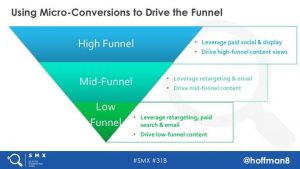— August 26, 2019
How can you ensure that your business receives a constant flow of new customers or clients? Build a network of people who refer others to your business in exchange for a monetary payment, known as a referral fee.
A referral fee is a type of commission paid to the coordinator in a transaction—a person responsible for bringing a customer to your business. Sometimes, this fee is paid in exchange for the business introduction, but more often, it is tied directly to a sale.
Why referral fees?
Why rely on referral fees? The answer is simple: more and more people aren’t trusting traditional ads.
Most print ads seem as dead as the dinosaurs. As for digital ads, people are either blocking them with ad blocker software or tuning them out the old-fashioned way. And let’s face it—advertising costs rack up quickly. But your potential customers trust the recommendations of their peers more than other forms of advertising, making referrals an especially powerful marketing tool. Referral fees reward people for sharing your brand and generating new customers, so they help you tap into the power of these trusted recommendations.
But how can you use a referral fee to generate more sales? This article has you covered.
Referral fee fundamentals
Referral fees are all about rewarding skilled individuals for consistently bringing in new, quality customers. Often, these individuals have experience and connections that your business otherwise wouldn’t have.
It’s sort of like when you pay a realtor to search out apartments that haven’t been placed on the market yet. A realtor has the experience and contacts to find these apartments that you would never know about on your own.
As a business, you can offer payment to brand advocates who are able to bring in new business. The structure is similar to a referral program agreement, but these people are exceptionally good salespeople, drumming up a new business that you wouldn’t have otherwise. At some point, these brand advocates should be rewarded, and you should consider paying them a referral fee.

Do referral fees work?
Through referral fees, any type of business can access client networks that are tough to tap into. If someone has a whole network of people who would be perfect customers, it makes sense to enlist them as a salesperson, and pay them a percentage of the revenue generated from customers they bring in as a referral fee.
But first, you must determine whether a referral fee will work for your business. A referral fee will only work if your brand’s products or services are seen as valuable, your customer service is top-notch, and your brand is generating positive buzz. So, make sure to generate excitement around what your brand has to offer first! To ensure that people are spreading the word about your business, you can then award incentives to those who share your brand.
Keep in mind that a referral fee won’t work if people aren’t excited about your products and services. A traditional referral fee incentivizes someone to share pertinent information with their network. But why would they share this information if they didn’t believe in it? Intrinsic motivation is far more important than the cash incentive.
Who pays the referral fee?
The person who initiates the process pays the fee. In most practices, the seller advertising their goods and services begins the process of picking an individual ‘referrer’ to search for a ‘buyer’. However, some industries use third party lead generation services, where they pay the service a percentage of profits for any new customers that the service helped them gain.
Paying referral fees to individuals: working out the amount
When you set out to work out a referral fee, there are a number of factors to consider and questions to ask yourself before you settle.
When it comes to paying referral fees to individuals, there’s never a fixed amount. Normally, it varies, and what’s paid is subject to negotiation and agreement.
Many referral fees are calculated as a percentage of a purchase or purchases that a referred customer makes. However, your referral fee does not have to be a percentage. A flat fee often works well, especially if margins are thin and/or if you need to pay a salesperson in addition to the referrer.
When determining the exact flat fee or referral fee percentage, remember that you want to be fair to all parties involved. If the total cost of a potential purchase is too high in order to cover the referral fee, the potential customer will find somebody cheaper. But once you promise a certain referral fee, you must adhere to it. You must, therefore, be considerate with your prices.
Here are the variables to consider when deciding on an ideal referral fee:
First, think about servicing the deal and the cost of goods sold.
Ask yourself these questions:
- Are you already compensating your own salespeople with commissions? If so, is the referring party a replacement for salespeople? Or does the referrer simply send leads to a salesperson?
- Is there a service or consulting component of the sale?
- Is this a white label type of deal, where someone else creates the product or service, and you are the provider?
- What does it cost you to perform this service, including material costs?
- How much do your marketing efforts, including ads, cost?
- Once you make a sale, what is your profit margin?
If there is a substantial cost of doing business for the sale, you should set a lower referral fee percentage, or choose a reasonable flat fee.
Also, paying commissions to both the referrer and your sales team is a surefire way to lower your profits unnecessarily. Instead, consider offering other types of incentives to referrers, through a formalized referral program.
How long does the sales process take? In light of that, to what sales should the referral fee apply?
Some sales processes take a long time to close. How long does it count as a sale for the referring party? In other words, which sales can someone earn a referral fee on, if they’re the one who referred the buyer? Sales within 1 month of referring someone? Within 6 months? Any purchase by the customer they referred, even if it’s more than a year out from the referral?
These conditions must be fair so you aren’t handcuffed to your referrer forever. Be clear about when the relationship transitions from the referrer to your business.

When does your business get paid?
To help determine the conditions of your fee, think about the answers to these payment questions:
- When and how do you (the business) get paid?
- How are funds received for the sale?
- Upfront?
- In several installments?
When cash is received helps you plan out your payment schedule. No matter what you decide, ensure you are making money in all cases.
How should you determine referral fee schedules and arrangements?
Depending on how you want to drive your referrals, there are many different schedules you could use for referral fees. It all comes down to what will best motivate your referrers. Consider these incentive structures:
- Higher amounts for the first successful referral (to motivate new referrers to get started)
- Increasing amounts based on the amount of referrals made (or amount of referrals made in a fixed time period, such as a month)
- Contests where you reward the high performers within a certain time period
Referral fee examples
Here are some examples of referral fees.
Software Sales: Referral Fee Percentage Structure
Jason Lemkin outlines a strong example of how referral fees could work for your software business. His example utilizes multiple referral fee percentages depending on how much work the referrer puts in for your business:
“35%-40% of first-year ACV (Annual Contract Value) if they bring you a closed, signed lead. It would cost you that much to acquire and close that lead yourself.
15%-20% of first-year ACV if they bring you a true opportunity. i.e., if they do the marketing part, but not the sales part.
10% or so for a lead. Much more than this, without deep qualification of the lead, gets expensive.”
Automotive Sales: A Flat Fee
Automotive sales often involve flat referral fees payable after a referred customer purchases a car. These fees are often rather small: between $ 100-$ 300. After all, the cars have a large purchase price, and are sold rather infrequently. These sales also usually involve a salesperson at the dealership. Margins are typically thin, and oftentimes even compensated by the manufacturer. Still, recruiting referrers who work at a car repair shop or body shop is a great way to generate quality leads.

Tax and legal implications
Be aware of the tax responsibilities associated with referral fees.
- If a referrer receives $ 600 or more in referral fees within a calendar year, they must pay taxes on the amount they receive.
- If you pay a referrer more than $ 600 in a calendar year, it’s your responsibility to collect a W-9 form from them and issue a 1099 to them.
- However, if it’s a previous customer doing the referring, the amount you pay to the referrer can be considered a “refund,” “discount,” or “rebate” on a previous purchase.
Also, keep in mind that referral fees are not legal for all industries, so you’ll need to do some research to make sure you don’t set up an illicit system.
- Highly regulated industries, such as real estate, financial services, and automotive industries often have state or national laws, or license rules, that do not permit referral fees.
A Referral Fee Agreement: Establishing Expectations
A referral fee agreement is a formal contract between the referrer and the business owner, which establishes the referral fee percentage or amount, expectations, and conditions. You don’t have to outline a referral fee agreement, but choosing to enact one will clarify expectations on both sides. Plus, the money involved can be significant, so an agreement can protect you in case something goes wrong.
So, what should be included in a referral fee agreement?
Role of the referrer:
- Do they forward leads to sales immediately?
- Or do they also perform marketing and sales duties, including qualifying leads?
What is a successful referral?:
- Must a referral make a purchase within a certain time period for the fee to be earned?
- Or must the purchase be worth a certain amount?
Compensation:
- How will the referral fee be calculated?
- Is it a flat fee or a percentage?
Payment conditions and fee schedules:
- When and how will you pay?
- Do you have any detailed referral fee structures (like an opportunity to increase commission by making a certain number of sales in a month)?
- Don’t forget to consider return and refund policies.
Key Takeaways
A referral fee encourages people to spread the message about a business and rewards them in cash for a job well done.
You have nothing to lose when you establish referral fees. After all, you usually only pay the referrer if they generate new clients. That’s drastically different from the risky investment in paid ads that most potential customers will just tune out.
When your referrers hunt down new business, you’ll find new business that you may have not had access to previously, thanks to the referrers’ expertise and connections. And referral fees motivate intermediaries more than the prospect of just doing a favor. Who wouldn’t want a reward—especially a cash reward— for helping someone out?
But make sure to choose your referral fee carefully, based on the cost of your goods, how long it usually takes to close a sale, and other factors. Be aware of tax and legal implications. And consider establishing a referral fee contract to clarify expectations and protect your business.
Have other referral fee tips besides the ones commented on above? Let us know!
Business & Finance Articles on Business 2 Community
(77)







